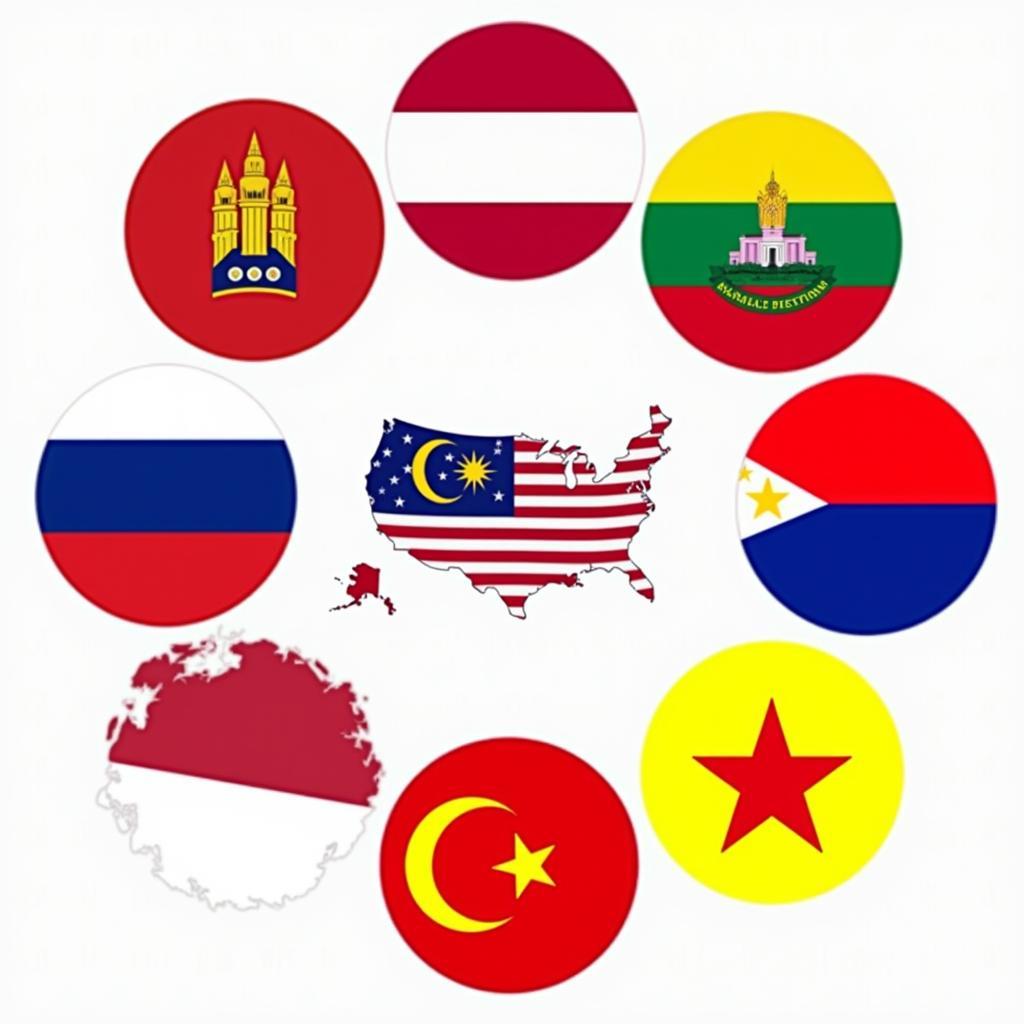Asean Armed Forces play a crucial role in maintaining peace and stability within the Southeast Asian region. From joint military exercises to humanitarian assistance and disaster relief, their combined strength and cooperation are essential for addressing shared security challenges. This article explores the multifaceted nature of the ASEAN armed forces, their individual strengths, collaborative efforts, and their impact on regional security.
Understanding the Role of ASEAN Armed Forces
The ASEAN armed forces represent a diverse group of military organizations, each with its own unique history, capabilities, and strategic priorities. However, a common thread unites them: the commitment to regional security and stability. This shared goal fosters cooperation and interoperability among the member states, allowing them to address shared challenges more effectively. Beyond traditional defense roles, ASEAN armed forces are increasingly involved in non-traditional security areas such as disaster relief, counter-terrorism, and maritime security. asean and its security This broader engagement highlights their adaptability and importance in a region facing complex and evolving security threats.
Key Responsibilities of ASEAN Armed Forces
- National Defense: Each member state’s armed forces are primarily responsible for defending its sovereignty and territorial integrity.
- Regional Security Cooperation: Through joint exercises, training programs, and intelligence sharing, ASEAN armed forces work together to address shared security challenges.
- Disaster Relief and Humanitarian Assistance: The armed forces play a vital role in responding to natural disasters and providing humanitarian aid within the region.
- Counter-terrorism and Transnational Crime: ASEAN armed forces are actively involved in efforts to combat terrorism, piracy, and other transnational crimes.
- Maritime Security: Given the importance of maritime trade and resources, ASEAN armed forces are increasingly focused on ensuring maritime security and freedom of navigation.
ASEAN Military Cooperation: Strength in Unity
 ASEAN Armies Rifle Meet: Enhancing Marksmanship and Camaraderie
ASEAN Armies Rifle Meet: Enhancing Marksmanship and Camaraderie
ASEAN military cooperation has significantly evolved over the years, moving from informal dialogues to concrete initiatives. asean armies rifle meet The establishment of the ASEAN Defence Ministers’ Meeting (ADMM) in 2006 marked a crucial step in formalizing defense cooperation. The ADMM and its associated mechanisms provide a platform for strategic dialogue, policy coordination, and practical cooperation on various security issues. Joint military exercises, such as the ADMM-Plus exercises, provide valuable opportunities for enhancing interoperability and building trust among the armed forces of ASEAN member states and their dialogue partners.
The ADMM and its Impact
- Enhanced Dialogue and Coordination: The ADMM facilitates regular dialogue and consultation among defense ministers, promoting greater understanding and coordination on security matters.
- Practical Cooperation: The ADMM has led to the development of several practical cooperation initiatives, including joint exercises, training programs, and information sharing mechanisms.
- Confidence-Building Measures: Through regular interactions and joint activities, the ADMM contributes to building trust and confidence among ASEAN armed forces.
Challenges and Future Directions
While ASEAN armed forces have made significant strides in cooperation, challenges remain. 27th asean armies rifle meet Differing defense priorities, varying levels of military capabilities, and the complex geopolitical landscape of the region pose ongoing challenges. However, the commitment to dialogue, cooperation, and capacity building remains strong.
“Maintaining a strong and cohesive ASEAN military presence is vital for navigating the complex security landscape of the region,” states Dr. Anya Sharma, a leading expert on Southeast Asian security. “Continued investment in joint training and interoperability will be crucial for addressing emerging threats.”
 ASEAN Humanitarian Assistance and Disaster Relief Operations
ASEAN Humanitarian Assistance and Disaster Relief Operations
Further strengthening the ADMM, expanding joint exercises, and focusing on non-traditional security areas will be essential for ensuring regional stability and prosperity. ase military swatches As Dr. Sharma further emphasizes, “The future of ASEAN security rests on the ability of its armed forces to adapt to evolving challenges and maintain a unified front against common threats.”
Conclusion
The ASEAN armed forces are a cornerstone of regional security. Their commitment to cooperation, capacity building, and joint action is essential for addressing the complex security challenges facing Southeast Asia. By continuing to strengthen their partnerships and enhance their capabilities, the ASEAN armed forces will play a critical role in maintaining peace, stability, and prosperity in the years to come.
FAQ
- What is the ADMM?
- How do ASEAN armed forces cooperate on disaster relief?
- What are the main security challenges facing ASEAN?
- How do joint military exercises contribute to regional security?
- What is the role of ASEAN armed forces in counter-terrorism?
- How does ASEAN address maritime security concerns?
- What are the future directions for ASEAN military cooperation?
Common Scenarios
- Responding to natural disasters like typhoons and earthquakes
- Participating in joint military exercises and training programs
- Conducting humanitarian assistance and disaster relief operations
- Contributing to counter-terrorism and anti-piracy efforts
- Engaging in maritime security patrols and operations
Further Exploration
- ASEAN and its security challenges
- The role of the ADMM in regional security
- ASEAN military modernization programs
- Non-traditional security threats in Southeast Asia
When you need assistance, please contact us: Phone: 0369020373, Email: aseanmediadirectory@gmail.com, or visit us at: Ngoc Lien Village, Hiep Hoa, Bac Giang, Vietnam. Our customer service team is available 24/7.
